Sir James Douglas encourages students to walk or roll to and from school.
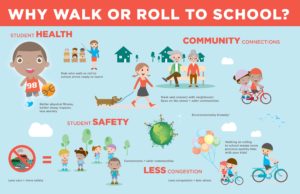
There are many reasons to choose active modes of transportation, and plenty of resources to help make your trip fun, easy and safe!
Results from the Active & Safe Routes to School survey
Many parents and children already enjoy walking or cycling to and from school. The Active & Safe Routes to School (ASRtS) program highlights how many students are currently walking or cycling to school and recommends ‘best routes’ to take to the school. We hope you will choose to join them!
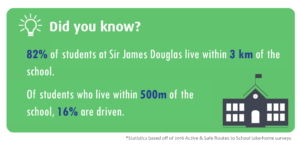
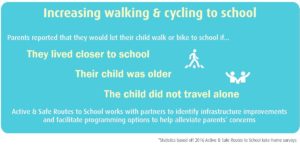
Resources to plan active trips to and from school
Check out the Capital Regional District’s ASRTS webpage to learn more about the goals of the program. You can also visit the City of Victoria site, or plan your next active travel trip to school below!
Best Routes to School Map
This map highlights the best walking and cycling routes to and from school based on safety and accessibility. For a printable copy of this map click here.
Biking
Biking to school? The Capital Regional District’s Bike Map shows common bike routes and rates them by degree of difficulty and comfort level – perfect for planning your ride to school. View it online, print it out, or pick one up at the CRD office to keep on you while riding.
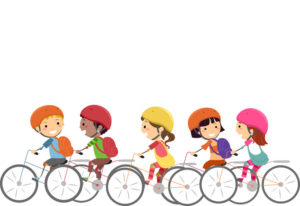
Biking is a great way to get around quickly and easily while building your child’s confidence and physical literacy.
Check out these resources for biking to and from school:
- Organize a Bicycle Train
- Cycling Safety Tips
- “How to Bike to School Safely” Video
- Skateboard and Scooter Safety Tips
Walking
Walking is a great way to get exercise while traveling to and from school, and familiarizes your child with their local neighbourhood.

Check out these resources for walking to and from school:
- Organize a Walking School Bus
- A Walking School Bus Story
- Pedestrian Safety Tips
- Why Walking to School is Better Than Driving
Plan Your Trip by Transit
Public transit can be part of an active trip to school. A recent study by the University of British Columbia found that transit users are three times more likely to meet recommended Canadian fitness guidelines.
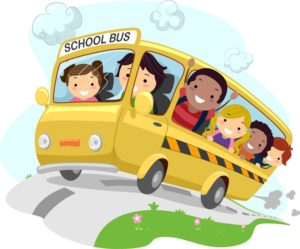
Visit the BC Transit Trip Planner to plan your best transit route to and from school. You can also download route maps and view transit alerts to help make your commute as smooth as possible.
Check out these resources for using public transit:
- Public transit safety for kids
- Victoria Regional Transit Rider Info
- Family fares on BC Transit
- Why public transit is good for kids
Carpooling and Drive-to-Five
If there is no way around it, and driving is a part of your commute to school, carpooling is a positive way to reduce emissions while sharing the task of driving and making connections in the community.
Drive-to-Five is an excellent option for students who must make part of their commute in a vehicle. Locate your school’s Drive-to-Five locations: these are drop-off points that are a five-minute walk away from the school.
The Drive-to-Five method is a great way to be part of the solution to decreasing traffic congestion around the school (increasing school ground safety), and provides children with a chance to be active before school, better preparing them for learning in class.

Traffic Safety in the School Zone
The school zone is a high-volume area where student safety is very important. All commuters, whether drivers, cyclists or pedestrians, must be aware and follow the rules in order to keep the school zone safe.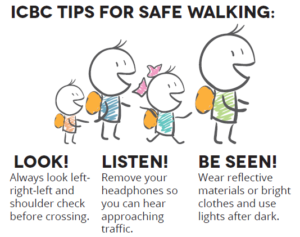
Check out these resources on carpooling, Drive-to-Five, and school zone safety:
Your School’s Travel Plan
Coming soon!
Your School Travel Plan is the document that outlines all of the efforts that have gone into improving infrastructure and encouraging students and families to plan active trips to school.
This document is a culmination of School Travel Planning efforts that began at Sir James Douglas in September, 2016.

